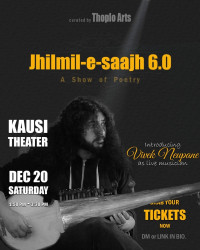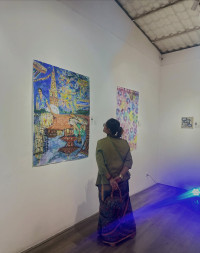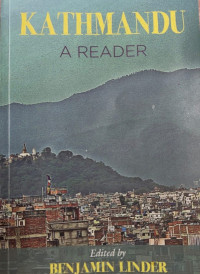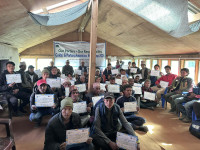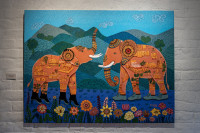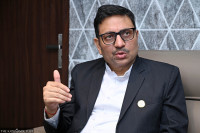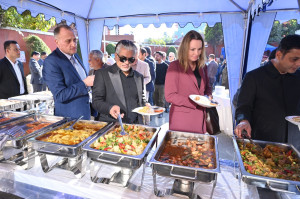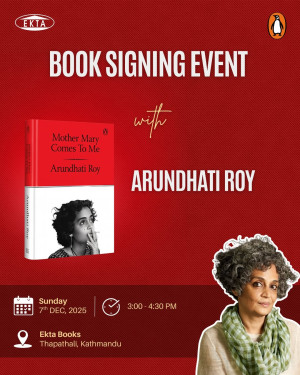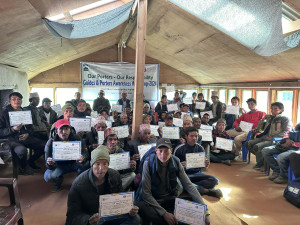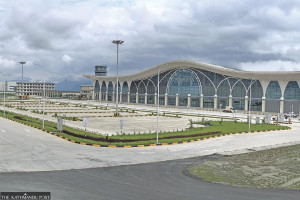Culture & Lifestyle
‘I am no slave to time’
Multi-disciplinary contemporary artist Bhuwan Thapa shares his inclination towards unconventionality in his profession and personal life.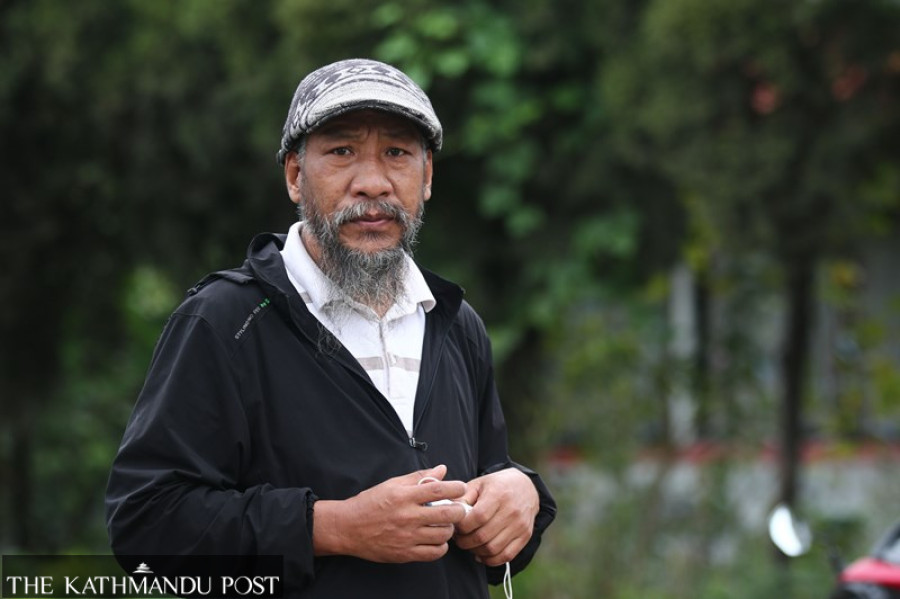
Pinki Sris Rana
Bhuwan Thapa, one of Nepal's most renowned sculptors, is an anomaly in a world where it is a norm to follow trends, set goals, and race ahead to achieve them. He was ten years old when he completed grade 3. He got married at 19 and was already 20 when he completed his SLC.
“I am no slave to time. I didn’t and still don’t subscribe to the idea of following the norm. I do what I want to do at my own pace,” says Thapa.
As an artist, Thapa is known for using unconventional and experimental materials to communicate his multiple thoughts and concepts. For Thapa, art has to have three things in it: skills, thoughts, and emotions. And most importantly, art has to be personalised to make it your own, he says.
Thapa sat with Post’s Pinki Sris Rana to talk about his art concepts, peculiar choices, and the status quo of Nepal’s sculpture art scene.
Excerpts:
What made you so interested in the field of arts?
When I was a small kid, my brothers and I would frequently go to the forests. On one such visit, my eldest brother, who was 22 years old at the time, carved out a stick figure of an animal using a hasiya (sickle). Even though the design of the animal figure wasn’t the most artistic—it was just a few sticks that made up a body, limbs, and a tail—it was when I first encountered art in my life. And that was when my fascination with art started. I was five years old at the time. From there on, I began carving woods and started making sketches of King Birendra and Queen Aishwarya. Villagers would often say, “Yo ta kalakar huncha” (He definitely will become an artist). That is how my interest cultivated.
Being the youngest child in the family also helped because I was given the freedom to explore things and hone my skills. As I had two elder brothers, I never had the pressure of providing for the family. I was always given the freedom of doing things my way. And my brothers, who trusted me and my skills, have helped me reach where I am today.
Many do not consider studying Fine Arts essential to becoming an artist. What made you pursue your bachelor's and master's degrees in fine arts? Do you think having a fine arts degree helps you grow as an artist?
Going to college, or even living a campus life, was the optimum experience I wanted out of life. I did not know what I would be studying, but I wanted to get a taste of that experience.
Though our society tends to consider getting a degree as unimportant for an artist, I believe that understanding art in a formal learning environment is necessary to create art that is different from everybody else. If we do not understand what we are doing or why we are doing it, we become similar to the machines that keep on making things without any sense of purpose.
You mentioned that you are a skilled painter and sketch artist. What made you choose sculpture, and what does sculpting mean to you?
When I was pursuing my bachelor’s degree, I wasn’t sure what I wanted to specialise in. I would often ask my teachers to guide me. It was Thakur Prakash Mainali, a senior sculptor, who, after numerous lengthy conversations, finally advised me to become a sculptor. “Although it[sculptor art] needs a lot of time and effort, the result we get from this is quite worthwhile,” he said.
In addition to that, I believe my urge to leave a permanent imprint on this earth led me to choose the field of sculpting.
You experiment a lot with your art form and the materials you use, and you often say that your methods and medium of working are not fixed or limited. Why do you feel experimentation is important?
I don’t like to get caught up with trends and try different methods or mediums that are trending. I go with the mediums and methods that best fit my concept. I am constantly searching for a medium that can communicate the multiple layers of thoughts that I am composed of—that one medium I can own. But the search has been a never-ending journey. That is why I want to keep on experimenting with different kinds of mediums as I attempt to give shapes to my shapeless thoughts.
Unlike many artists, you seem to prefer exhibiting your work in rural areas and public spaces like parks instead of in a gallery. So far, you have done only one solo exhibition in a gallery, in 2016? Why is that?
I came to Kathmandu 30 years ago, and the city became my only world for a very long time. People who know me as an artist are all in this city. It's not that I do not value galleries. An art gallery is like a temple for an artist like me, but I am also aware that Kathmandu's art galleries are not accessible to most people in this country. If people outside of the Valley cannot come to see my work, I can take my art to them. One of the reasons I started doing installation art in public places outside Kathmandu is that I wanted to make my artworks accessible to the masses. I want my artwork to make people slow down and take notice, even for a brief moment, and introspect.
In 2020, in the midst of a pandemic, I held a solo exhibition in Gulmi’s Satyawati, which is near my birth village Thulo Lumpek, to let my people forget about the distress of the pandemic. Even though it was for a brief moment, I think people did forget about the stress of the pandemic, and enjoyed my art.
As an artist, you use a lot of locally available raw materials in your artwork. How important is using local materials in your artwork?
When I do outdoor installation art in places outside the Valley, I like to use locally sourced materials. Creating art using local materials brings a sense of belongingness and ownership among the residents there. In the solo exhibition that I did in my village in 2020, I made art from the bamboo available in my yard. For years and years, people in our village have been making dokos out of bamboo. This is the reason why I believe the art made an instant connection with them. Another practical reason for using locally available materials is that it helps reduce the overall costs. Then, as an artist, all you have to contribute is your time and effort.
Some of your works are ambiguous and abstract. Do you not feel the need or the pressure to make the audience understand your art?
Of course, the primary intention of making art is to make people understand it. But the thing I prioritise the most is focusing on making art that leaves behind a residue of thought on people. That said, I do not believe in the commercialisation of the arts. When you want your artwork to do well commercially, you make the art palatable for possible buyers. Since I do not make artworks with the intention to just sell them, that pressure does not affect me.
How has Nepal's sculpture scene evolved over the years?
When I was an art student, sculpting was a subject that many didn't choose. It is still the case even to this day. When I was pursuing my bachelor’s degree in fine arts, only three students, including me, were majoring in sculpture. Today, the number of students majoring in sculpture has increased to around 10, but little has changed. Sculptors make up only around 10 percent of the total artist population in Nepal. This is because sculpting is messy, and it requires a lot of your time and effort. But no matter how arduous the work is, the reward is always fulfilling. Though there might not be many sculptors out there, they have made significant contributions to Nepal’s art scene.




 8.12°C Kathmandu
8.12°C Kathmandu
